Slobot About Town LXI:
 |
 |
Slobot visits the Historic Homes of Spartanburg, pt. 03.
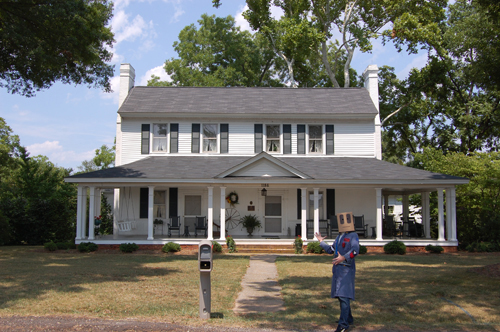
Slobot was ambling about Lyman when he found McMakin's Tavern. McMakin's Tavern was built by Benjamin McMakin and his son, Peter McMakin, over a number of years, with construction beginning in ~1790. |
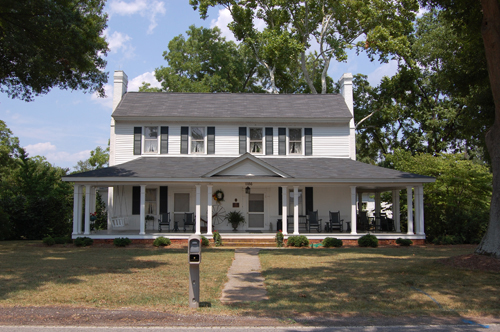
The two-story home was, at one time, the center of a plantation that spanned some 2000 acres. Additionally, McMakin's Tavern served as a popular stagecoach stop for travelers making their way from Charleston, SC to Asheville, NC. In ~1840 McMakin's Tavern was purchased by Samuel Morgan. The property has been owned and occupied by descendants of Samuel Morgan for the last 168 years. |
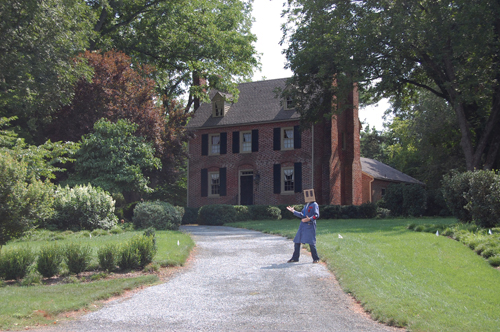
From Lyman Slobot made his way to Woodruff. There he found the Nicholls-Crook House. The Nicholls-Crook House was built by Jesse Crook in ~1800. |
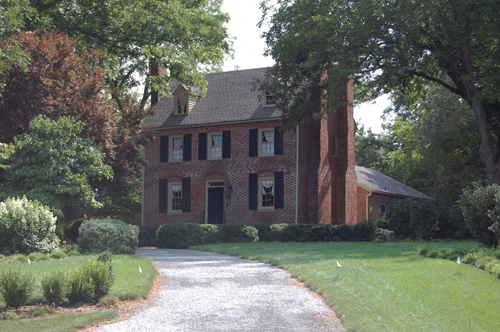
The basement of the house, with its earthen floor, was once used as domestic slave quarters. Today the house is home to a bed and breakfast. |
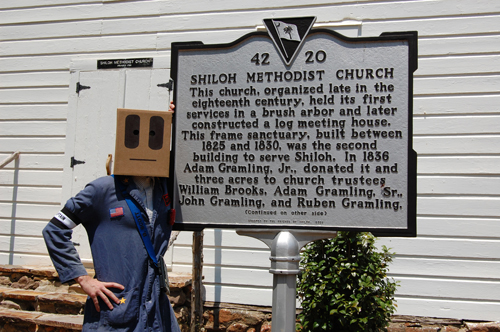
Slobot then made his way to Inman, where he found the oldest sanctuary in Spartanburg County, Shiloh Methodist Church. |
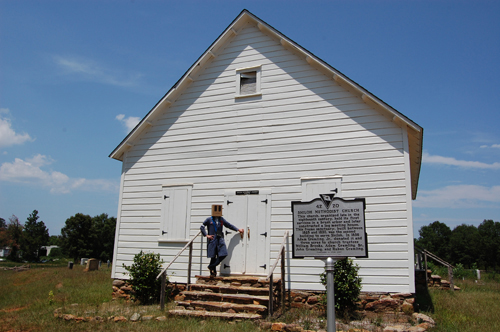
Shiloh Methodist Church, as it now stands, was built between 1825 and 1830, though its members had been congregating since just after the Revolutionary War. |
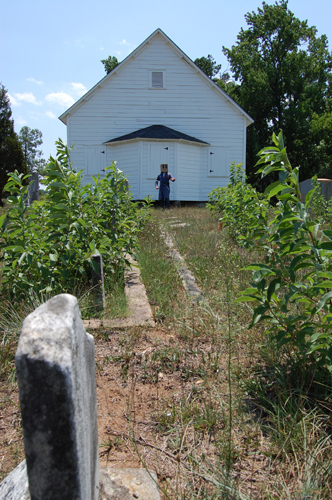
In 1836 Adam Gramling Jr. donated the church and the land upon which it stands to church trustees. |
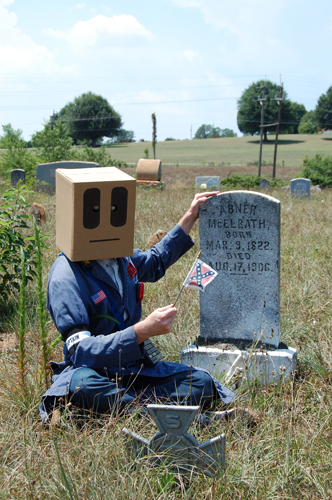
Headstones in the church cemetery date from 1816 to 2004 and bear names of some of Spartanburg's earliest families. Some headstones are no longer legible, and others are plain, unengraved fieldstones. |
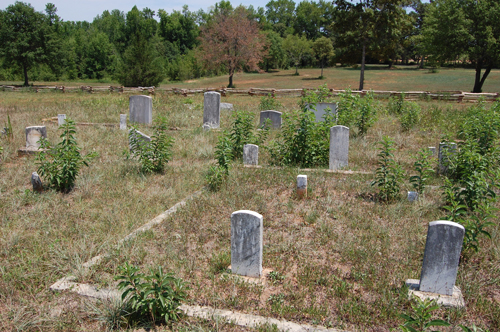
By ~1915 only some 14 members of Shiloh Methodist Church remained. Those 14 members would merge with the Inman Methodist Church (now Inman United Methodist Church). |
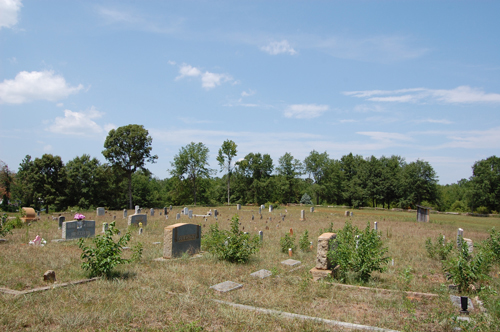
The church and its graveyard remain in the care of Inman United Methodist Church. |
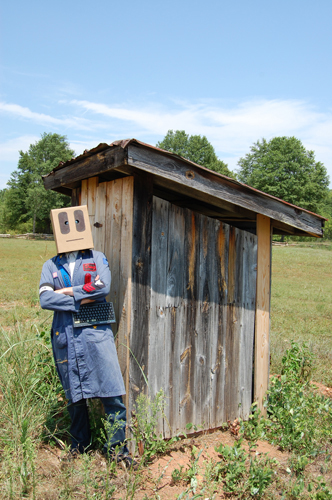
At the far end of the cemetery Slobot found a privy...
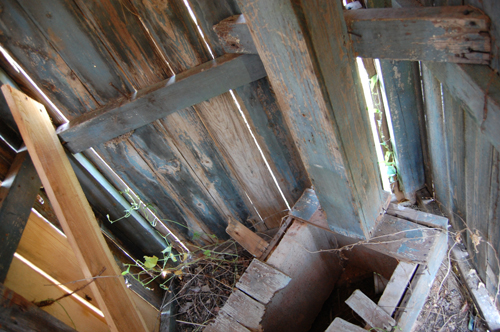
a long out-of-use privy.
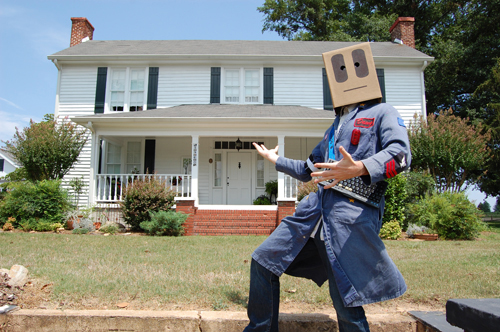
Near Shiloh Methodist Church Slobot found Bush House.
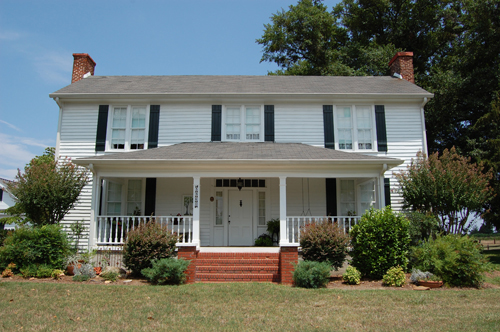
The original structure was constructed in ~1830, with additions being made in ~1850. At one time the home was at the center of a 1,115 acre farm. |
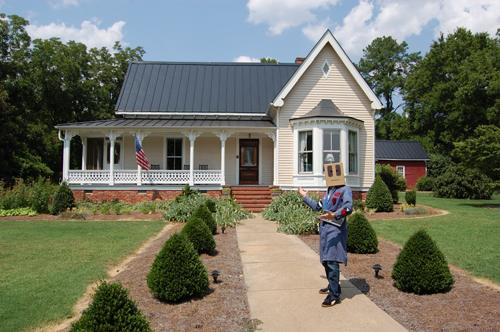
From Inman Slobot wandered towards Wellford. In Wellford Slobot found New Hope Farm. New Hope Farm was built on land that was granted to the Snoddy family by King George III in 1774. |
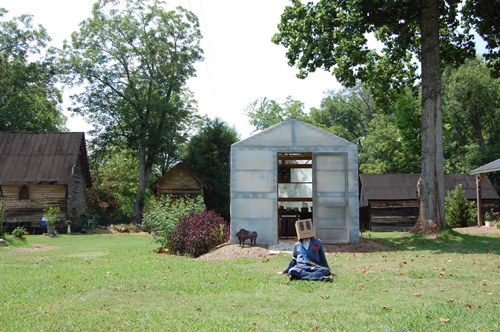
Slobot sat down at the site of the original residence at New Hope Farm. The original home was built in 1816. Disaster would strike, however, on April 18, 1893 when a fire destroyed the original structure and its outbuildings. |
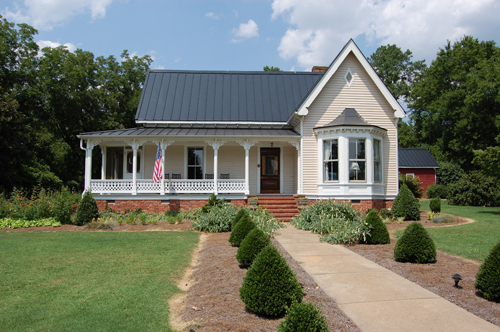
The current residence was constructed as a home for J. R. Snoddy in 1885. J. R. Snoddy was the grandson of Isaac Snoddy who, at the age of 3, set sail from Ireland onboard the James & Mary in 1773. |
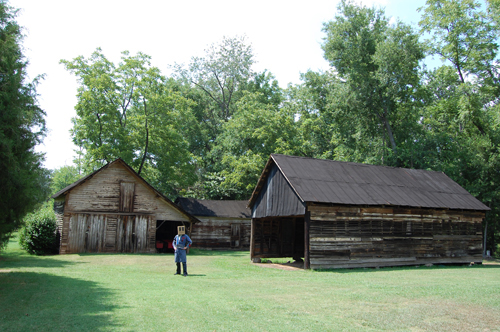
Slobot explored the outbuildings, such as this buggy barn and stable, of New Hope Farm. |
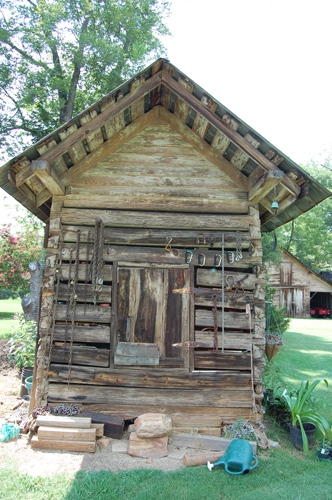
Slobot also found a corn crib that had been built in 1890. Wire mesh lines the interior of the building in order to ward off ravenous rodents. |
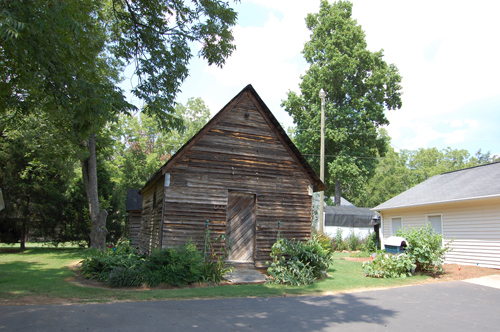
Slobot also found a "smokehouse" that had been built in 1902. Meat was not smoked, but salted, in the building. |
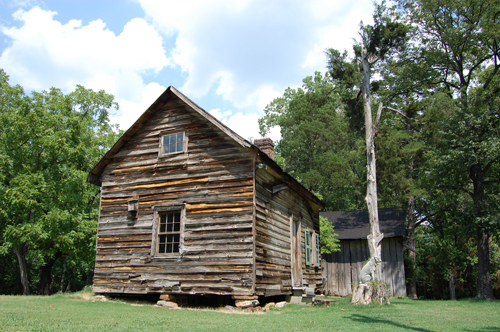
The oldest outbuilding at New Hope Farm is this servant's house. For many years a servant by the name of Mrs. Davis lived upstairs and cooked meals downstairs. |
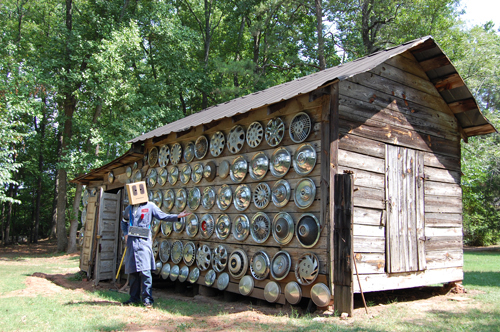
One of Slobot's favorite buildings at New Hope Farm, though, was this blacksmith's shop, which is adorned with hubcaps retrieved from a former pothole near the farm. Slobot would like to thank Mary & Jimmy Snoddy, Peggy & Donald Robinson, the National Register of Historic Places and YOU! |
